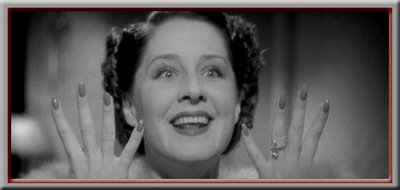 It's Summer 1903 in Missouri and the Smith family are buzzing about the World's Fair coming to their town the following spring. Teenage daughters Rose (Lucille Bremer) and Esther (Judy Garland) are dreaming about proposals from handsome men, the eldest son Lonnie (Henry H Daniels Jr) is off to college and the father Lon (Leon Ames), a junior partner at a law firm, is about to tell the family that they're all relocating to New York Ci -- oh, but let's stop there. For any plot summary of Meet Me in St. Louis does the movie a great disservice. This classic musical isn't plot driven at all so much as a series of three seasonal vignettes of family life: Summer, Autumn and Winter with the following Spring in 1904 serving as a coda. Almost all of what might be called "plot" in Meet Me In St. Louis is imagined. That is to say, that the story drivers are all in the future. One day the family will move to New York. One day Rose, Lonnie, and Esther will be married. One day St. Louis will catch the attention of the nation. In essence the movie is a lovingly rendered still life of a family (and town) on the brink of great changes rather than an animated portrait of the changes themselves.
It's Summer 1903 in Missouri and the Smith family are buzzing about the World's Fair coming to their town the following spring. Teenage daughters Rose (Lucille Bremer) and Esther (Judy Garland) are dreaming about proposals from handsome men, the eldest son Lonnie (Henry H Daniels Jr) is off to college and the father Lon (Leon Ames), a junior partner at a law firm, is about to tell the family that they're all relocating to New York Ci -- oh, but let's stop there. For any plot summary of Meet Me in St. Louis does the movie a great disservice. This classic musical isn't plot driven at all so much as a series of three seasonal vignettes of family life: Summer, Autumn and Winter with the following Spring in 1904 serving as a coda. Almost all of what might be called "plot" in Meet Me In St. Louis is imagined. That is to say, that the story drivers are all in the future. One day the family will move to New York. One day Rose, Lonnie, and Esther will be married. One day St. Louis will catch the attention of the nation. In essence the movie is a lovingly rendered still life of a family (and town) on the brink of great changes rather than an animated portrait of the changes themselves.St. Louis begins smartly in the kitchen, the heart of any home. Mrs. Anna Smith (Mary Astor) and her maid and cook Katie (Marjorie Main) are preparing ketchup. Katie thinks it's too sweet, Anna thinks her husband will like it that way. Various members of the cast scoot through the kitchen sharing their opinions, too. They can't seem to agree on the flavor: too sweet? too sour? too spicy? too watery? Vincente Minnelli the real gourmet cook in the director's chair doesn't have the same problem. He gets everything right.
READ THE REST...
All Personal Canon articles
*







